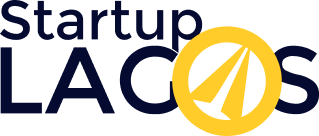By Ayodele Ogunkunle
In a dispensation where customer expectations are transformed by seamless digital experiences, Product-Led Growth (PLG) has emerged as a transformative method to optimising businesses.
PLG flips the conventional marketing and sales funnel on its head, putting the product at the core of user acquisition, engagement, and expansion.
As a Senior Product Marketing professional, my journey in mastering PLG frameworks has been pushed by a commitment to aligning marketing initiatives with product experiences to deliver measurable outcomes in user acquisition, retention, and expansion.
At the center of PLG lies an indisposable fact: users want to experience value before committing to a product.
This understanding has guided my efforts to implement a marketing approach that enables users to interact meaningfully with the product from the outset.
My approach requires creating a path for customers to navigate a product's core functionality, identify its value proposition, and seamlessly transition into loyal advocates.
In this journey, metrics such as Net Revenue Retention (NRR) and Customer Acquisition Cost (CAC) are not just indicators of success; they are standards for continuous improvement.
Product led growth starts with a deep knowledge of how users interact with a product. By using a customer-centric approach, I have been able to identify friction points and chances to enhance the user experience.
For instance, onboarding processes are not ordinarily transactional guides but pivotal times where the product's value is communicated and reinforced.
Crafting onboarding flows that balance simplicity with functionality has proven essential in driving user activation.
Iterative testing and feedback curves, I have worked to redefine product functionalities that focus on user needs.
This entails utilising tools like contextual guides, in-app messaging, and personalised notifications to keep users engaged and informed. These micro-interactions, while subtle, contribute to building trust and loyalty over time.
One of the most important shifts I have led in my role is the alignment of marketing efforts with product functionality.
Marketing, in a PLG context, is not boxed to driving traffic or generating leads; it is about setting the standards for meaningful product experiences.
Campaigns are designed to showcase use cases, demonstrate value, and ultimately encourage users to take that next step within the product ecosystem.
Consider the intersection between freemium models and premium features. Marketing programs are directed towards educating free users on the importance of scaling, using data-driven insights to showcase how premium capabilities align with their specific needs.
This personalized approach not only yields conversion rates but also enhances the perceived value of the product.
While creativity and innovation are part and parcel to product led growth, the true measure of success lies in the metrics.
NRR, a cornerstone of PLG, serves as a strong indicator of a product's capacity to retain and enlarge its user base.
By analyzing NRR, I have been able to identify patterns of customer behavior, incorporate strategies to minimize churn, and uncover opportunities for upselling and cross-selling.
Equally necessary is maintaining a healthy cost acquisition cost. In the product led growth model, where the product drives acquisition, it is very important to ensure that the price of acquiring new users remains sustainable.
This entails a meticulous evaluation of campaign performance, user acquisition channels, and product adoption rates. By focusing on scaling these elements, I have consistently achieved a balance between growth and profitability.
The rise of product-led growth is far from static. As new technologies and user behaviors surface, the frameworks we rely on and embrace change.
I believe the next generation of product-led growth lies in enhancing artificial intelligence and machine learning to execute hyper-personalized experiences at scale.
Predictive analytics will play a lead role in anticipating user wants, while automating will promote more efficient and effective engagement approaches.
In my journey of enhancing product strategies, the intersection between marketing and product has become a force for promoting growth.
By mastering the frameworks, aligning initiatives, and prioritizing metrics like NRR and CAC, I have been able to deliver impactful results that not only grow the user base but also build lasting relationships with customers.
Credit: TechBuild Africa
Play audio
Comments
Add your comment
Categories
Startup Raises
262
Feature
83
Fintech
39
Fresh News
696
How To
84
Acquisition
39
Reports
22
Opinion
57
Recent Posts
Meet the Founder Who Turned Down $1.5 Million and Built One of Africa’s Fastest-Growing Companies Two Years in a Row
Most startups pursue large funding rounds to accel...
FG Targets 35 Million Disabled Nigerians in Digital Inclusion Drive
The Nigerian Federal Government has made a promisi...
How Banks and Fintechs Determine Creditworthiness
Banks and fintech companies in Nigeria are adoptin...
Metrospeed and Chevron Partner to Drive Lagos Metro Smart City Development
Metrospeed Property Development Limited has announ...
Beware: Tria Stealer malware is targeting Android users’ WhatsApp and banking apps
There has been an alarming rise in sophisticated c...
Related Post
Why Most Nigerian MSMEs Don’t Survive 5 Years — And What Can Be Done About It
Segun AsegunIn Nigeria, over 80 percent of micro, small, and medium enterprises...
How I Turned AI Into a Teammate, Not Just a Tool — and How You Can, Too
By now, you’re probably using AI to lighten your workload in some way. But are y...
From N200,000 to N2.3 Billion: Amoke Oge's Journey to the Top
In 2023, Amoke Odukoya, founder of the renowned Amoke Oge restaurant, revealed s...








No comments